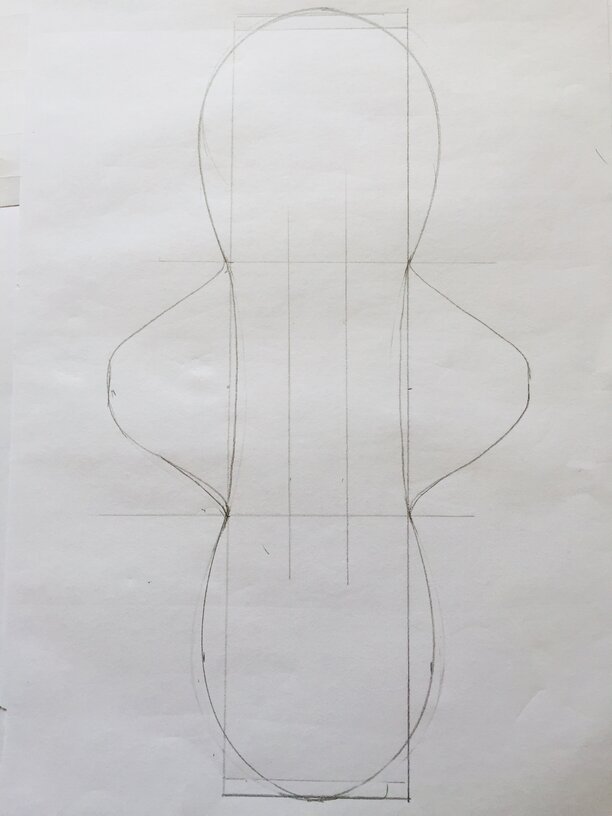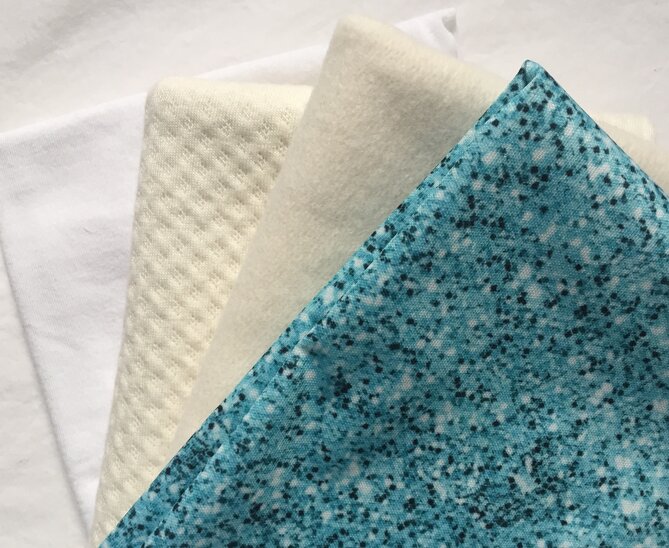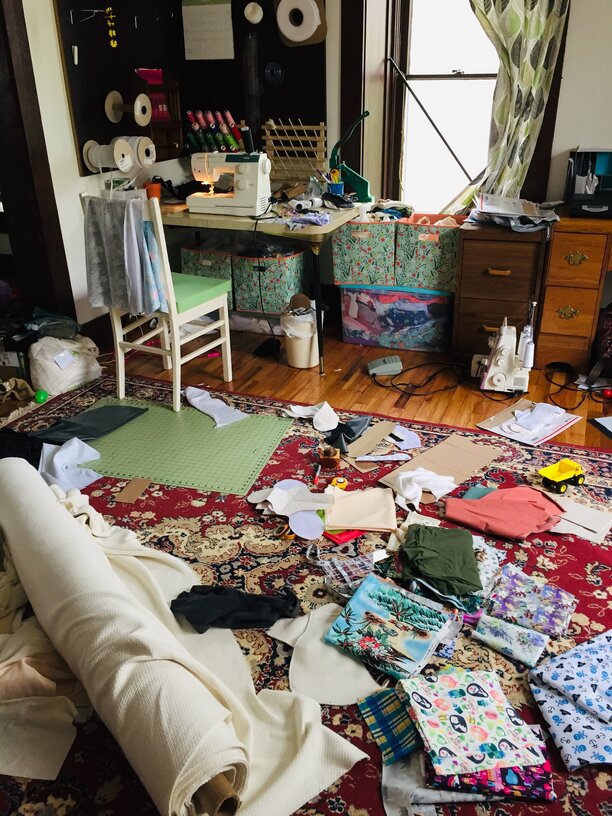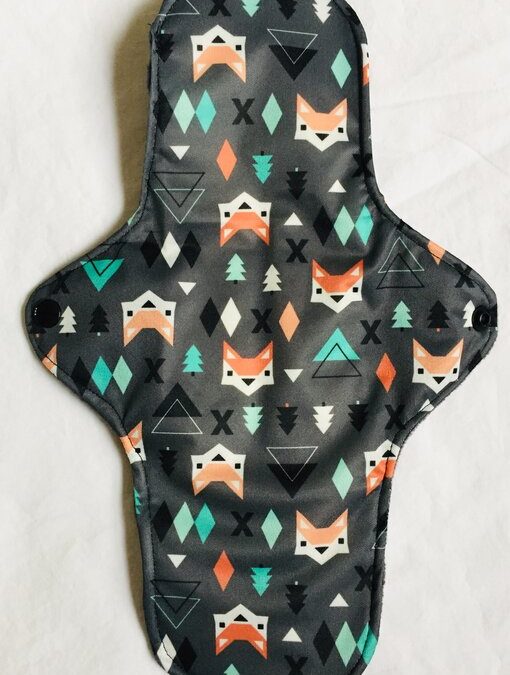While researching cloth pads for periods, I realized there’s no reason they can’t effectively work for incontinence, too. So I got to work. If you’ve ever wondered how a product gets created, here’s a look into my process.
Step 1: Draft Cloth Pad Pattern
At its heart, pattern drafting is mathematical. First, I decided how big I wanted the pads to be. Underwear – and pads – are divided into thirds: front, crotch and back. I drew a rectangle on paper and rounded out the front and back. Then I used my handy curved ruler to draw the curve for the crotch area.
Wha-la! A pattern is born 🙂


Step 2: Choose Fabrics for Cloth Pads
Once I have my pattern drawn, I decide on fabrics. Let’s be real, while moisture for both periods and incontinence comes from roughly the same part of the body, how they, uh, flow is very different.
Incontinence needs a fast absorbing fabric and a waterproof backing.
For the topper, I wanted comfortable fabrics that would not inhibit the core from absorbing moisture. Bamboo jersey is AMAZING. It’s super thin and doesn’t feel cold and wet against your body. Microfiber is soft and cuddly, but nothing beats athletic mesh’s wicking power.
I chose 3D zorb for the top layer of the core since it’s #allthethings. Quick to absorb, can handle a lot of liquid, and it’s trim! Who needs 6 layers of flannel when one lovely layer of 3D zorb will do the same job?
For the larger pad sizes, I put a layer of 500 gsm bamboo fleece behind the zorb to hold in the moisture. Bamboo fleece is da bomb, by the way. It holds onto moisture like a toddler with a toy and refuses to let go. But it doesn’t absorb very quickly, which is why I paired it with 3D zorb.
For extra-extra absorption without bulk, I layered in a smaller layer of zorb in the wet zone.
Finally, I backed it with PUL to create a moisture barrier. I chose not to put flannel behind the PUL layer because the flannel will wick moisture much faster where you don’t want it.
Step 3: Sew the prototype
This is where things get messy. Here’s a pic of my sewing room when I’m developing patterns. It looks like a fabric bomb has gone off. For weeks. This is also the time where I forbid my kids from tromping through the room, lest they upset the delicate balance of “organized” chaos.
I cut out my patterns and sewed a few, making adjustments along the way.

Step 4: Despair
Ugh. Cloth pads look simple from the outside, but sewing them can be a pain.in.the.ass. Trying to wrangle stretchy fabrics is like herding cats – it never goes where you want. But I really wanted to use better fabrics than cotton on top. Cotton works really well to absorb quickly, but it also tends to feel really wet against the body. This doesn’t matter so much when cloth pads are used for periods, but for incontinence, you want something that’s not going to chafe the skin.
Needless to say, I tossed a bunch of pads in the trash after mangling them. Who’d have thought that cloth pads could be so complicated?! Maybe it wasn’t such a good idea after all…
Step 4: Pep Talk
I reminded myself that I’ve learned a thing or two over the past 6 years sewing 1000+ incontinence products. I know what fabrics and combos will get the best results. Heck, I’ve already spent hundreds of hours battling different fabrics and have learned how to best sew them.
Time to try again.
Step 5: Product Launch
Once I’ve figured out the best way to sew the cloth pads, I decided on fabric prints and combos, took pictures, and posted them to my Etsy shop.
Step 6: Feedback
No product is perfect right out of the gate. While I’ve mastered my patterns to get the perfect fit every time for fitted diapers and incontinence underwear, it took a couple of years and A LOT of customer feedback.
Cloth pads will be no exception. There’s always room to improve and I look forward to making them better.
I also look forward to trying them out myself for those pesky periods and times I decide to jump on the trampoline. Because no matter how many times I pee before hitting the mat, my bladder so does not work that way it’s supposed to. And I’m 34!
Thanks, giving birth x2.
What are some of your favorite cloth pad patterns and fabric combos? Comment below and let me know!
Alecia
Latest posts by Alecia (see all)
- Best Adult Diaper Covers - March 7, 2024
- Best Fabrics for Making Adult Diaper Covers - February 16, 2024
- How to Use the Zigzag Stitch - May 4, 2023


